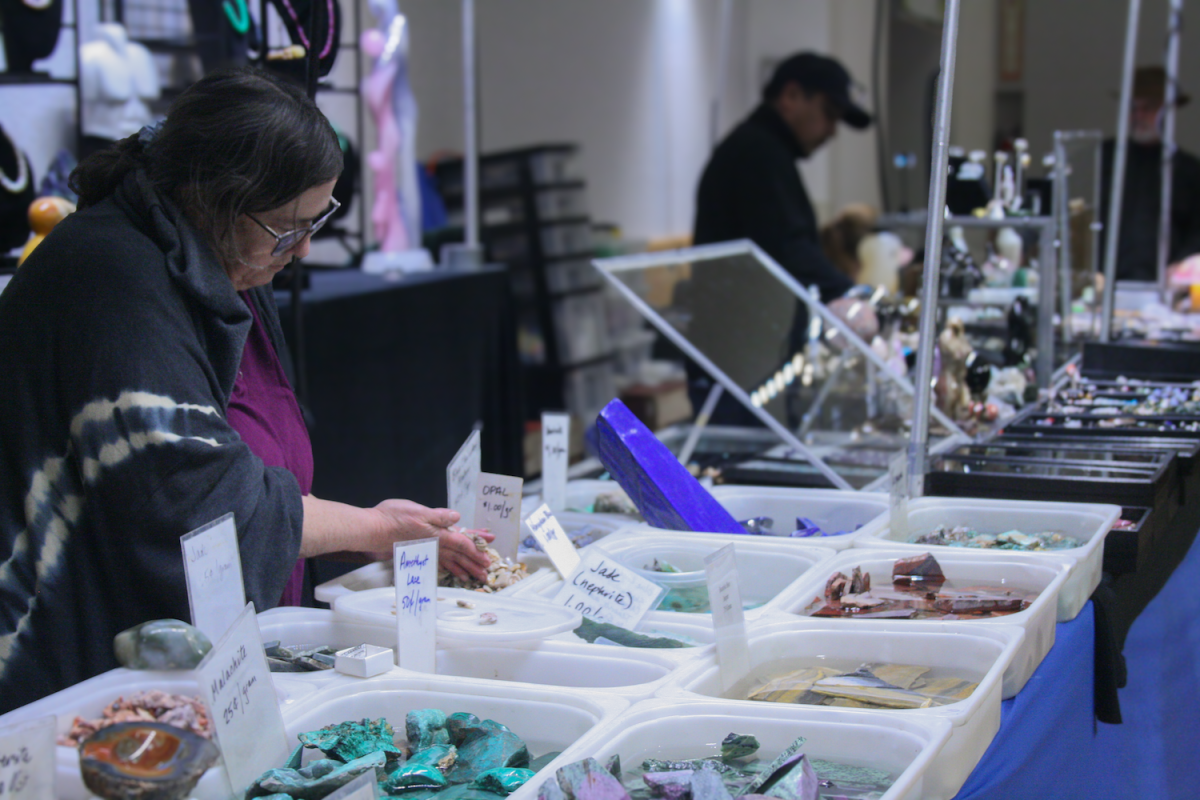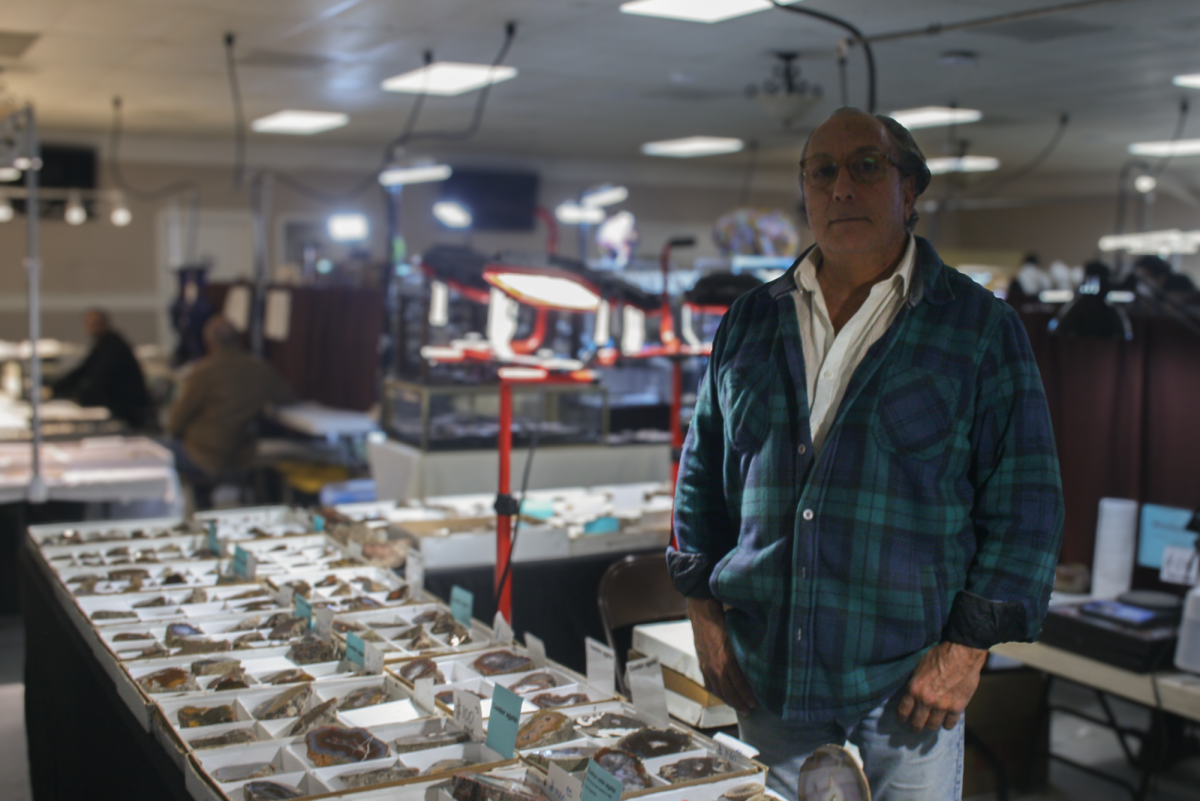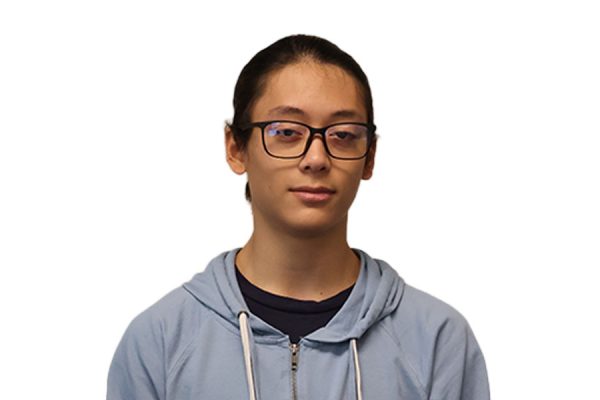Vendors push into the walkways, trying to draw customers with cased displays of their wares.
In the corner, the drone of a loudspeaker buzzes with the chant of an auction, old minds scheming to outfox each other at the bid.
The wares aren’t cheap, passing for hundreds of dollars per gram.
They aren’t selling drugs — this 12,000-square-foot space was dedicated entirely to selling rocks.
The Mineral & Gem Society of Castro Valley (MGSCV) hosted the 75th annual Mineral & Gem Show inside the Newark Pavilion, packing the three buildings with stalls.
From March 8 to March 10, the event hosted 17 hours of bargaining and haggling for everything from pearls to petrified wood. A raffle and an auction brought both old-time collectors and newcomers alike to the show. Meanwhile, an event-long workshop taught lapidary, the art of turning rocks into polished masterpieces.
Walking into the pavilion on Sunday afternoon, customers were greeted first by John Garsow’s stall, filled with hundreds of vibrant colors of gemstones and minerals. The “bucket of bait,” Garsow explained, is for roping in children to the trade at an early age — like he was.
Much like a child in a candy shop, Garsow was fascinated by his father’s mineral shop in Minnesota and eventually continued the business as he grew up.
“I hooked my son on rocks as well,” Garsow said. “I dragged him while he kicked, screamed, pulling him down to burn up in mines and holes in the ground.”
And while the stall sells a dazzle of different minerals, Garsow maintains a far more grounded perspective. Nothing on his table is something someone needs, he explains. Nothing that will keep a person fed, nothing to keep a person warm.
“It’s all about mental fulfillment. This isn’t like gold or silver, where you can turn around and exchange them for cash. You need someone who wants it — and if you’re a cutter, then you can take it, improve it, and turn the rock into a piece of art,” Garsow said.
It’s all about mental fulfillment. This isn’t like gold or silver, where you can turn around and exchange them for cash. You need someone who wants it — and if you’re a cutter, then you can take it, improve it, and turn the rock into a piece of art.
— John Garsow
Although the event was filled with vendors, those willing to learn the arts also had a place to be. Through an unmarked door in the fair rested a quiet room, a man with a chainmail tie and a woman making wax casts for gems. This was the classroom where MGSCV members taught lapidary, metal casting, and smithing.
Teresa Taniguchi, the event’s casting expert, was seated at the casting table — with a particular history with the pearls of Japan.
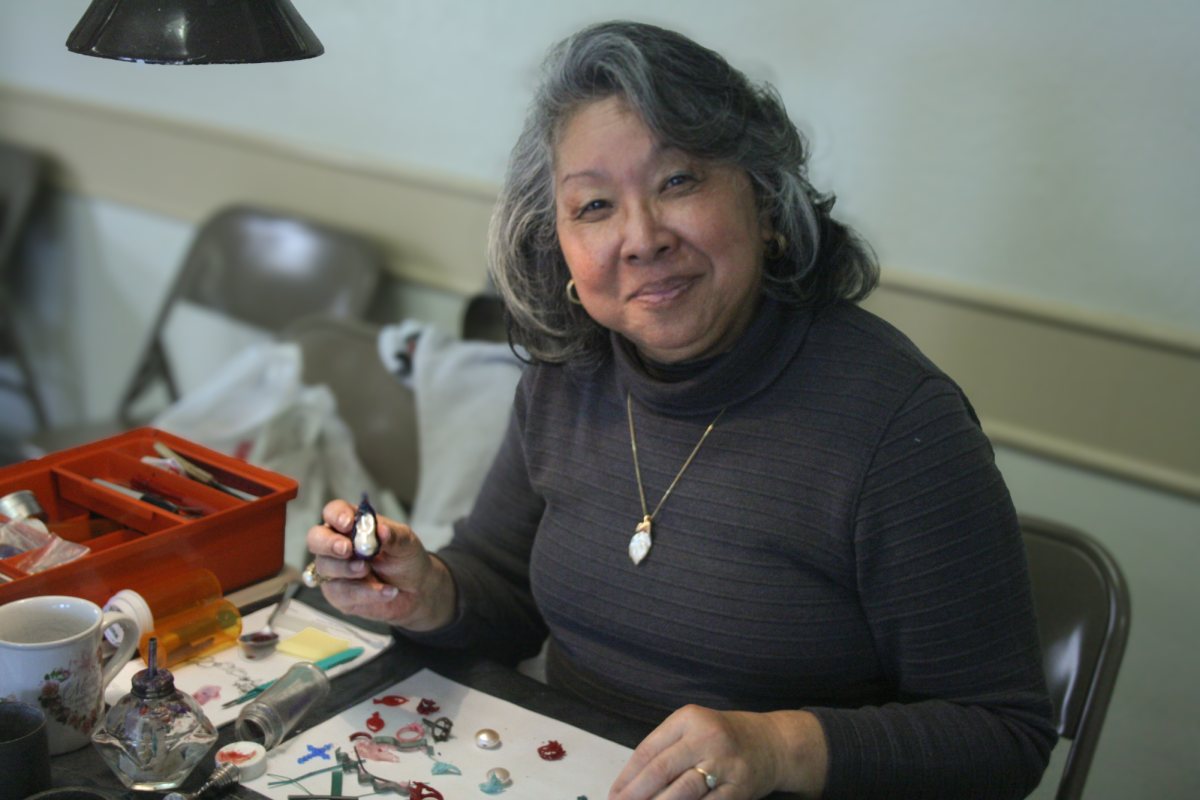
It was a pearl that nobody liked because it’s really ugly in the back,” Taniguchi said, picking up a particularly lumpy pearl. “So what I did was create a backing to bring out the beauty in it.”
Although natural oyster pearls are typically closely spherical, Taniguchi’s pearls were anything but spheres. By taking shellfish meat and putting it in the oyster shell, she explained, the irritated oyster produces pearl content far faster—and far messier—than usual to wall itself off from the shellfish meat.
“Thirty years ago, Japan’s freshwater oysters would only get these rice-sized pearls and charge a fortune for them. As they kept going, they got better and better at them until they got the round pearls you see today,” Taniguchi said.
And with that same style of determination, Taniguchi had managed to create an aluminum holder for the unloved pearl, complete with minuscule leaves, flowers, and spirals — all in a space the size of a thumb.
“It’s a funny shape, but I just kind of liked it,” Taniguchi said.
Passing out the exit of the primary building, inside the second stood a gentleman’s stall, selling under the illumination of cave lights.
Luis de Los Santos was a first-timer to the Castro Valley show, but in the mineral collector industry, he was known far before he joined. Filling his stall are rocks not supplied by any other vendor on the planet: Argentinian Condor Agates.
“When my agate hit the market in 1993, the collector’s view of Agate changed completely,” de Los Santos said.
When he was a child, de Los Santos was considered a “green dog” among the residents of Argentina for picking up pebbles and stones that nobody cared about. At the time, Argentina’s mining industry had only just begun expanding after the Second World War.
“But as I grew up, a German man showed me that rock-hunting was very common in other parts of the world,” de Los Santos said.
In September of 1989, he came to California’s Denver Gem & Mineral Show– the second biggest in the U.S. Luis rented a car to get there and — without even a booth — tried to sell his homeland’s rocks. He had brought just a satchel of petrified pinecones to sell, yet luck was on his side.
“I ran in the hotels to see if anybody wanted them… and people did! I sold everything in a couple of days and realized this could be a business,” de Los Santos said.
By 1990, Luis had secured a monopoly of mining claims in Argentina and brought his family to the U.S. Returning to Argentina every Spring, he discovered more and more unique minerals from Argentina to show the world. But despite his success, the future is uncertain as his age reaches four-fifths of a century.
“Between both of my daughters, only one likes rocks – and not agates. When I’m gone, I don’t know who’s going to follow the business,” de Los Santos said.
As visitors wandered through the fair, attention was drawn not only to traditional jewelry but also to more artistic works, such as those sold at a stall known simply as Eidos, headed by Leigh Becker and Marcia Winiewski. Not far back from the Garsow stall, the stand displayed works of everything from unusual patterns of stone to horn-shaped gems in cases, creating a solid gallery of rock artistry.
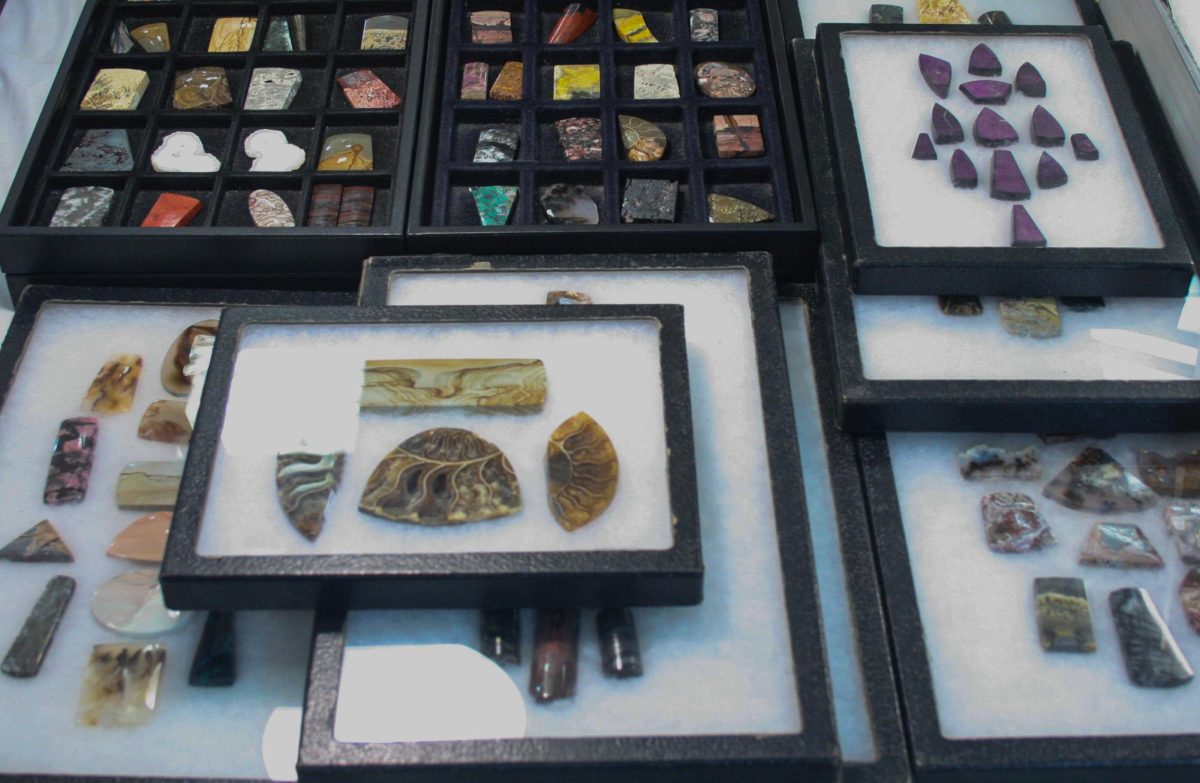
Becker, despite all her handiwork on display, reminded visitors of the dedication it takes for those in the trade of lapidary.
“Like most things, like sculpture and photography, lapidary takes time. All these things take sacrifices,” Becker said.

